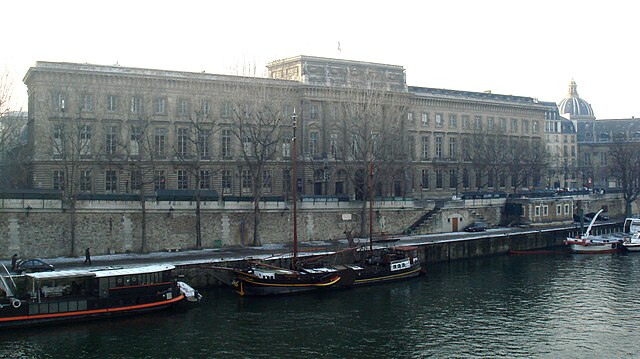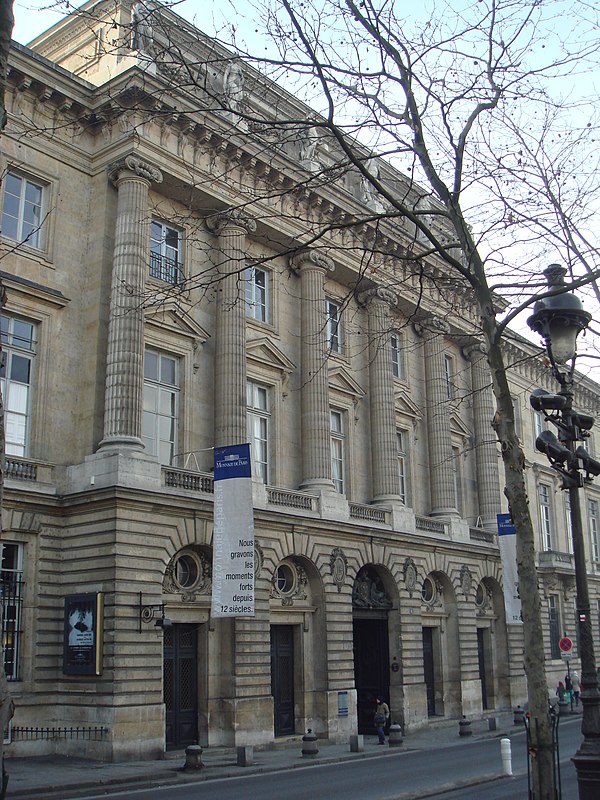Top Qs
Timeline
Chat
Perspective
Monnaie de Paris
Mint of France From Wikipedia, the free encyclopedia
Remove ads
The Monnaie de Paris (French pronunciation: [mɔnɛ də paʁi], Paris Mint) is a government-owned institution responsible for producing France's coins. Founded in AD 864 by King Charles the Bald with the Edict of Pistres,[1] it is the oldest continuously running minting institution and one of the oldest extant companies in the world.

In 1973, the mint relocated its primary production to a facility in Pessac, and today the original facility in Paris, while still operational, functions primarily as a museum and is home to a collection of many ancient coins.
Monnaie de Paris acquired its autonomy and was granted legal personality by law no. 2006–1666 in 2007.[2]
In 2012, it was the first public institution to obtain the Living Heritage Company label.
At the end of September 2017, Monnaie de Paris reopened after renovation work.
Remove ads
Building in Paris
A Neoclassical edifice, the Hôtel de la Monnaie was designed by Jacques-Denis Antoine and built from 1767–1775 on the Left Bank of the Seine. The Monnaie was the first major civic monument undertaken by Antoine, yet shows a high level of ingenuity on the part of the architect. Today it is considered a key example of French Neoclassicism in pre-Revolutionary Paris. The building is typified by its heavy external rustication and severe decorative treatment. It boasts one of the longest façades on the Seine; its appearance has been likened to the Italian palazzo tradition.[3] The building, which housed mint workshops, administrative rooms, and residential quarters, wraps around a large interior courtyard. It remains open to the public and includes a numismatics museum, located within what was once the main foundry.
Remove ads
Development
The Monnaie de Paris employs 500 people (in 2010) on two sites: the Hôtel de la Monnaie in Paris (55% of the workforce) and the monetary establishment in Pessac, in Gironde (45%).[4] In 2019, turnover amounted to 134 million euros for a workforce of 489 employees.[5]
Following a 5-year renovation project known as Metalmetamorphose,[6] the museum at the Monnaie de Paris – known as the Musée du Conti (11 Conti Museum) – was reopened on 30 September 2017.[7]
Remove ads
See also
- List of museums in Paris
- Napoleonic medal
- Philippe Danfrie – Superintendent of the Mint in the late 16th century.
- Pierre Marie François Ogé Bust of Jacques Denis Antoine
- List of oldest companies
References
External links
Wikiwand - on
Seamless Wikipedia browsing. On steroids.
Remove ads

